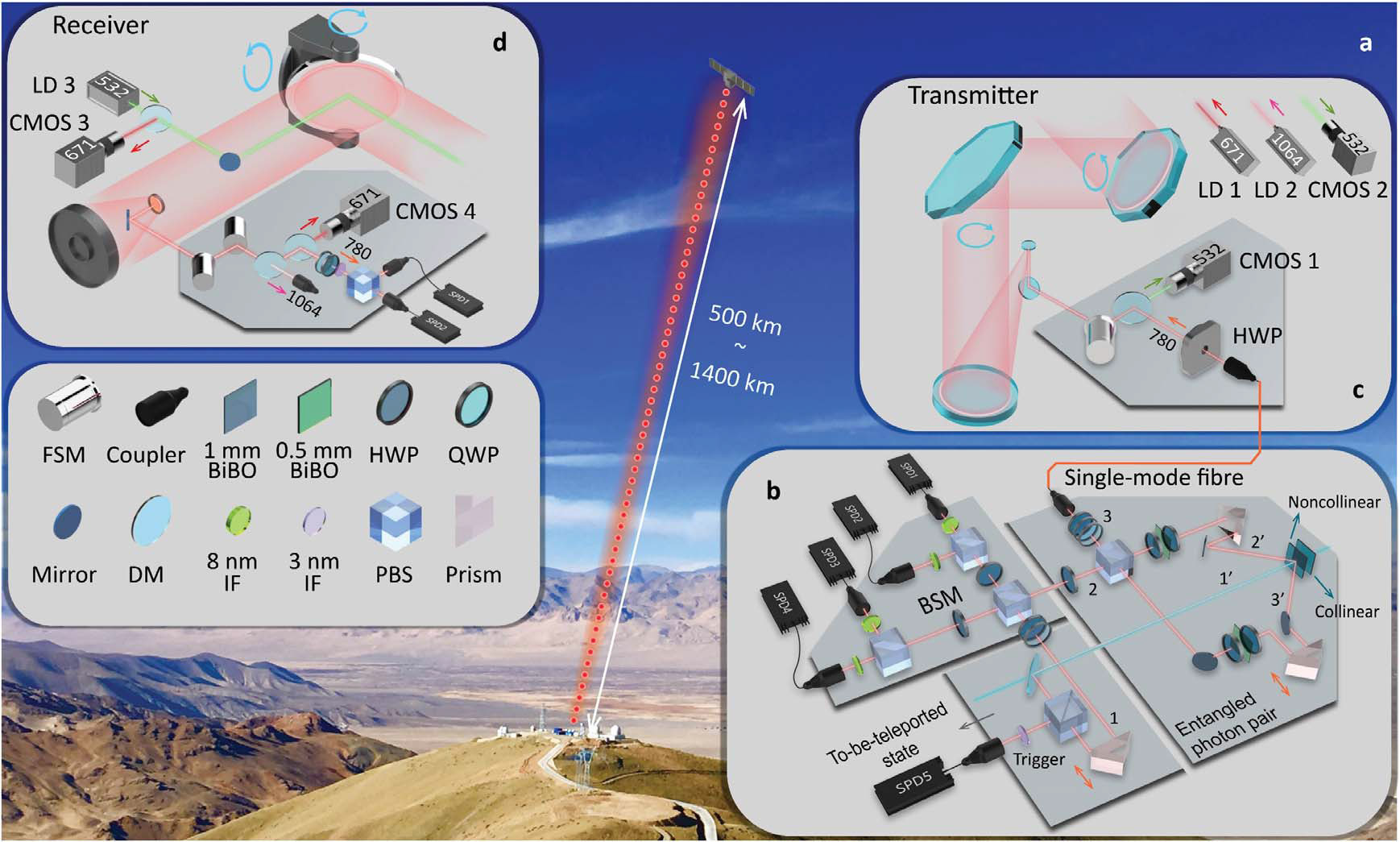The Chinese for the first time in the world teleported photons from Earth to orbit (1400 km)

Many years ago, Albert Einstein called quantum entanglement "a creepy action at a distance." This is really a counterintuitive concept, which at first glance contradicts common sense. Two objects can be at a great distance from each other, but they retain a “connection” with each other through their quantum states. Having destroyed the state of one object (by measuring it), we thereby recognize the state of an object entangled with it, no matter at what distance it is. That is, the quantum state of the first object at the moment of measurement as if passes to the second object, it is figuratively called quantum teleportation.
Now a group of Chinese physicists for the first time in the world carried out quantum teleportation of an object from Earth to orbit. The results of the experiment with the “terrible action at a distance” were published on July 4, 2017 on the preprint website arXiv.org (arXiv: 1707.00934).
Especially for this experiment, the Chinese last year put the scientific satellite Micius into a sun-synchronous orbit. Every day it passes over the same point of the Earth at the same time, which makes it possible to carefully prepare the experiment and conduct it at any time under constant conditions, and also repeat if necessary under the same conditions. The Micius satellite is equipped with a highly sensitive photon detector and equipment to determine the quantum state of individual photons sent from Earth.
')
During the experiment, quantum teleportation was carried out with varying degrees of reliability (see diagram) at a distance of 500-1400 km from the transmitter to the satellite, which is a new world record in the range of quantum teleportation. Previously, such experiments were carried out only on Earth, and the maximum distance to test quantum entanglement was about 100 km. In vacuum, the transfer of photons occurs more reliably, they react less with the surrounding objects and retain confusion better.

The Ngari station with a transmitter for the experiment was built in the mountains of Tibet at an altitude of more than 4000 m. The station generated entangled photon pairs at a speed of 4000 per second. Half of them went to the orbital station, and it was checked whether quantum confusion remained after the transfer. The second half of the photons remained on Earth.
To improve the quality of transmission, researchers have developed a number of innovative techniques and special devices, including a compact super-bright source of multi-photon entanglement, equipment to reduce beam divergence, a high-speed and high-precision APT system (acquiring, pointing, tracking).

Measurements showed that part of the photons on arrival at the satellite really retained the entanglement with their earthly "partners." In particular, for 32 days of transmission from several million photons sent, 911 remained entangled. Transmission accuracy was 0.80 ± 0.01, which significantly exceeds the classic limit (see the diagram below).

Photons with the same quantum states from the physical point of view are the same photons. Thus, it can be stated that for the first time in history, scientists teleported an object from the surface of the Earth into orbit. Well, in practical terms, this is the first working uplink for reliable transmission of quantum information over very long distances - from Earth to satellite. The authors believe that this is an important step towards creating a quantum Internet on a global scale.
Theoretically, there is no maximum limit on the distance for measuring entanglement, that is, quantum teleportation. In practice, the quantum state of photons is very fragile and is destroyed as a result of reaction with the environment; therefore, it is very important to develop technologies for the reliable transfer of entangled photons over long distances.
Quantum teleportation can find application in various fields: “Teleportation over long distances is considered a fundamental element in protocols, such as large-scale quantum networks and distributed quantum computing,” writes a group of Chinese scientists in a lecture to a scientific article. - To create a "quantum Internet" on a global scale, it is required to significantly expand the distance for transmitting information. A promising technology for this is the use of a satellite platform and satellite communication channel, which can conveniently link two remote points on Earth with a relatively small loss of signal, because photons travel most of the way in vacuum.
It will be difficult for other countries to beat China's record for quantum teleportation range, because neither the European Union nor the United States planned to launch satellites with photodetectors specifically for such an experiment in space, and it’s incredibly difficult to maintain quantum entanglement on Earth in 1400 km of optical fiber.
Source: https://habr.com/ru/post/373625/
All Articles